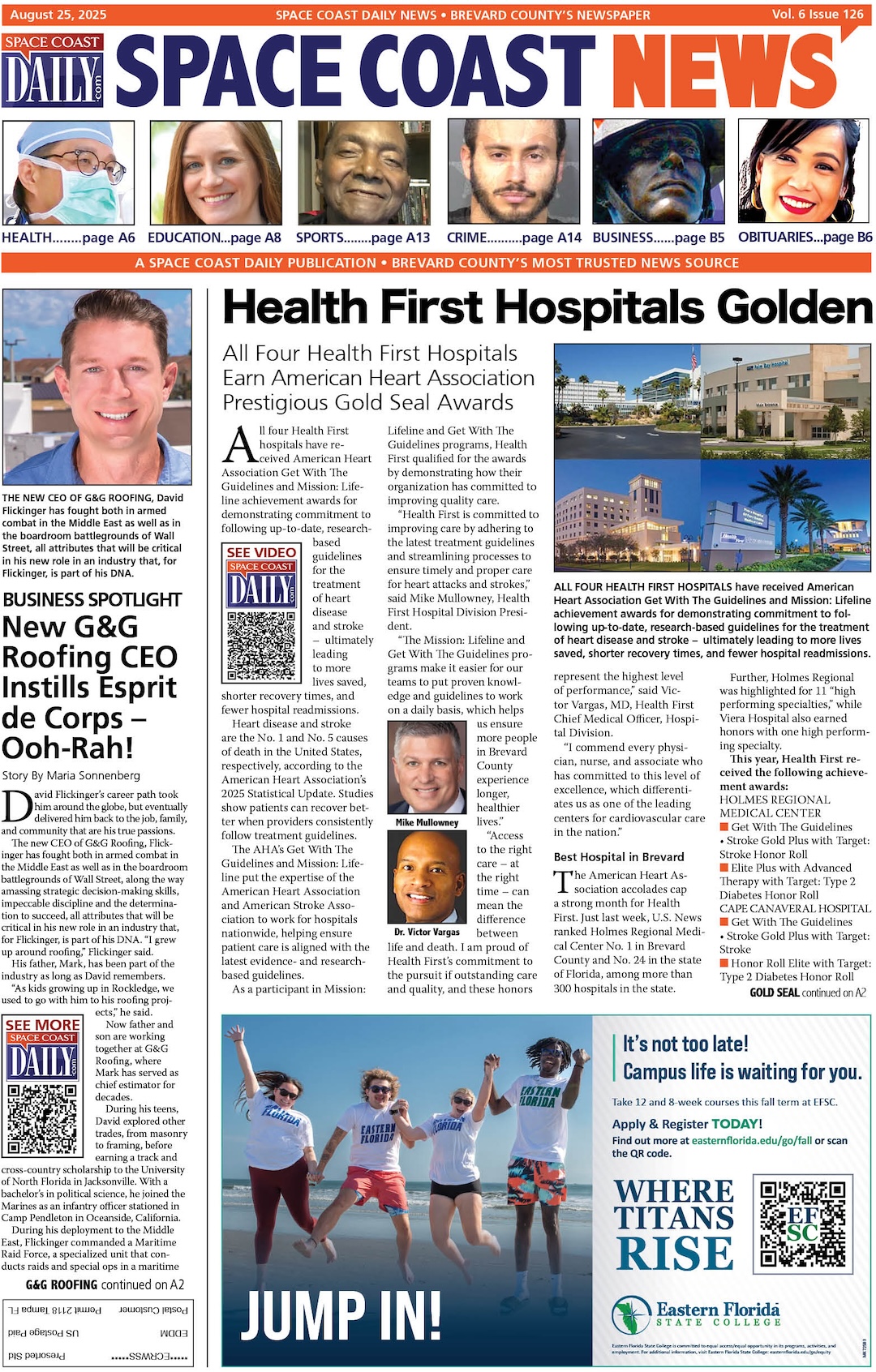U.S. Space Force to Launch Eighth X-37B Mission From Kennedy Space Center Aug. 21
By Space Coast Daily // July 30, 2025
X-37B Mission will launch on SpaceX Falcon 9

BREVARD COUNTY • FLORIDA — The U.S. Space Force, in partnership with the Air Force Rapid Capabilities Office, is scheduled to launch the eighth mission of the X-37B Orbital Test Vehicle (OTV-8) on Aug. 21, from Kennedy Space Center.
X-37B Mission 8 will launch on a SpaceX Falcon 9 rocket, designated USSF-36, with a wide range of test and experimentation objectives.
These operational demonstrations and experiments comprise next-generation technologies, including laser communications and the highest-performing quantum inertial sensor ever tested in space. Mission partners include the Air Force Research Lab and the Defense Innovation Unit, respectively.
Mission 8 will contribute to improving the resilience, efficiency, and security of U.S. space based communications architectures by conducting laser communications demonstrations involving proliferated commercial satellite networks in Low Earth Orbit.
Laser communications are integral to the future of space communications as the shorter wavelength of infrared light increases the amount of data that can be sent with each transmission.
Additionally, they are more secure than traditional radio frequency transmissions owing to the more targeted nature of laser beams. The use of proliferated relay networks enhances the resilience of U.S. space architectures by ensuring that they contain no single point of failure.

These experiments come as part of a broader push across the U.S. Space Force to uphold the safety and security of the space domain by enhancing the resilience and flexibility of U.S. orbital systems.
Commenting on the significance of this demonstration, Chief of Space Operations Gen. Chance Saltzman stated, “OTV-8’s laser communications demonstration will mark an important step in the U.S. Space Force’s ability to leverage proliferated space networks as part of a diversified and redundant space architecture. In so doing, it will strengthen the resilience, reliability, adaptability, and data transport speeds of our satellite communications architecture.”
Additionally, Mission 8 will demonstrate the world’s highest-performing quantum inertial sensor ever used in space.
This demonstration will enable accurate unaided navigation in space by detecting the rotation and acceleration of atoms, eliminating the need for satellite networks like traditional GPS.
This technology is useful for navigation in GPS-denied environments and consequently will enhance the navigational resilience of U.S. spacecraft in the face of current and emerging threats. As quantum inertial sensors would be useful for navigation in cislunar space, they additionally promise to push the technological frontiers of long-distance space travel and exploration.
Speaking on the quantum inertial sensor demonstration, Col. Ramsey Horn, Space Delta 9 commander, asserted, “OTV 8’s quantum inertial sensor demonstration is a welcome step forward for operational resilience in space.

Whether navigating beyond Earth-based orbits in cislunar space or operating in GPS-denied environments, quantum inertial sensing allows for robust navigation capabilities when GPS navigation is not possible.
Ultimately, this technology contributes significantly to our thrust within the Fifth Space Operations Squadron and across the Space Force, guaranteeing movement and maneuverability even in GPS-denied environments.” The Fifth Space Operations Squadron, within USSF Delta 9, conducts day-to-day on-orbit operations of the X-37B in partnership with the Air Force Rapid Capabilities Office.
The X-37B is a dynamic and responsive spacecraft responsible for conducting a range of tests and experiments that expedite the development of critical next-generation technologies and operational concepts for reusable space capabilities.














